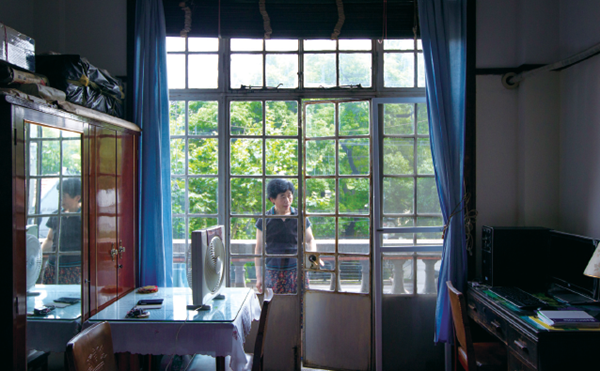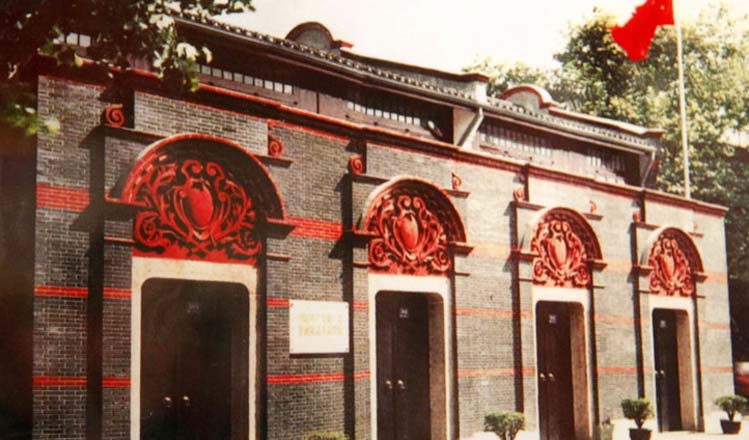Tales from Normandie Apartment
Updated: 2016-07-02 04:54
By Zhou Wenting in Shanghai(China Daily USA)
|
|||||||||
 |
|
The building was considered to be one of its kind when it was first constructed, offering residents amenities that many other properties didn't. [Photos by Gao Erqiang/China Daily] |
Adam Sinykin from the United States said the building surprised him when he first laid eyes on it as it looked very much like the famous flatiron building in New York.
"We feel lucky to be living in such a place. Foreigners, especially those with children, think it is romantic to be living in an old building," said Sinykin, who moved into the property with his wife and daughter in 2007.
The International Savings Society, a French financial institution, had purchased a triangular plot of land around the 1920s at the intersection of Central Huaihai Road and Wukang Road before building a French Renaissance style building and naming it after Normandy, a northwest region in France. It was one of the city's earliest modern residential buildings and most of the residents were upper class expatriates.
"It was built as an apartment for single white-collar people. Some prominent figures from the political, cultural and art sectors later moved in too," said Lu Yun, a spokeswoman with the Hunan sub-district that the building is located in.
Lin Jianghong, who moved into Wukang Building in 1954, said the property was considered to be in a league of its own during those times.
"A layer of felt was attached to the steel window frames so that noise was minimized when people shut their windows. All the rooms and corridors had central heating and some of the kitchens even had ironing boards installed in them. The building managed to showcase the exquisiteness of Shanghai," said Lin, who used to work at the Shanghai Municipal Housing Security and Building Administration Bureau.
"Although the building was designed nearly a century ago, it catered to modern living needs, such as having rooms for a nanny and storage spaces," added Zhou Bingkui, another resident.
Among those interviewed for the project, Xu Baoying is the person who has lived in the building for the longest time, having moved into Wukang Building in 1959.
"From our room we can see Soong Ching-ling's house across the street. In the 1960s when the city faced a food shortage, we would see Soong's chubby nanny strolling in the garden and feeding a couple of chickens," said the 81-year-old, who used to be a head nurse at a well-known hospital.
- Russian Eastern Spaceport shows mutual trust
- UK parties head for leadership battles amid Brexit fallout
- Special Syria envoy plans for July talks, August political transition
- Double suicide attacks kill at least 28 in Cameroon
- Turkey in mourning for 42 killed in deadly assault on Istanbul airport
- Brazil could dismiss Rousseff the day before Olympics ends

 Tenth birthday of the world's highest altitude train line
Tenth birthday of the world's highest altitude train line
 Crucial moments in the history of the CPC
Crucial moments in the history of the CPC
 Chibi Maruko-chan 25th anniversary exhibition
Chibi Maruko-chan 25th anniversary exhibition
 Turkey in mourning for 42 killed in assault on airport
Turkey in mourning for 42 killed in assault on airport
 China's future film stars take graduation photos
China's future film stars take graduation photos
 Russian Eastern Spaceport shows mutual trust
Russian Eastern Spaceport shows mutual trust
 Chinese Olympic team's uniforms unveiled in Beijing
Chinese Olympic team's uniforms unveiled in Beijing
 Paintings on paddy fields in Shenyang, NE China
Paintings on paddy fields in Shenyang, NE China
Most Viewed
Editor's Picks

|

|

|

|

|

|
Today's Top News
Abe's blame game reveals his policies failing to get results
Ending wildlife trafficking must be policy priority in Asia
Effects of supply-side reform take time to be seen
Chinese State Councilor Yang Jiechi to meet Kerry
Chinese stocks surge on back of MSCI rumors
Liang avoids jail in shooting death
China's finance minister addresses ratings downgrade
Duke alumni visit Chinese Embassy
US Weekly

|

|









